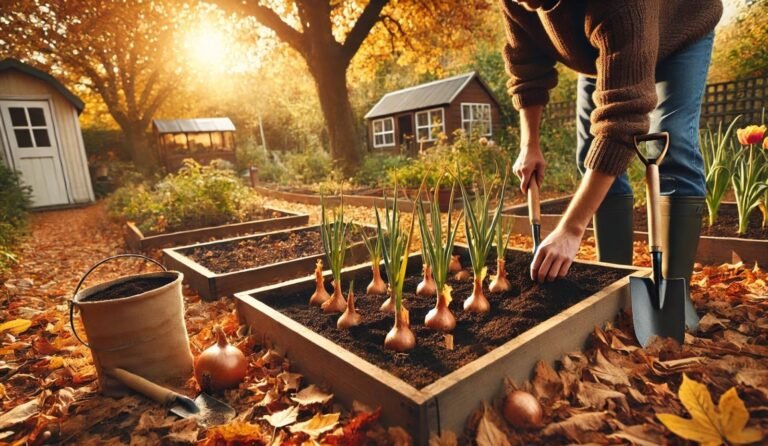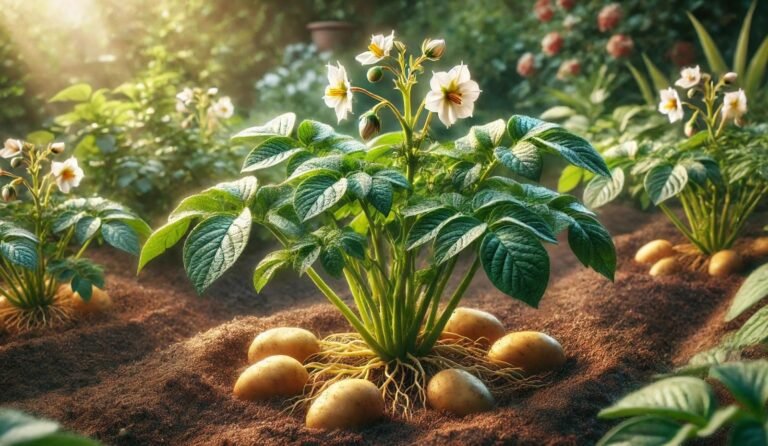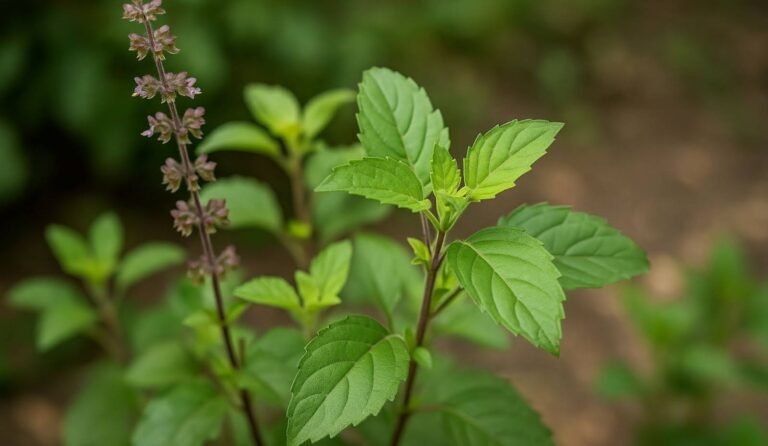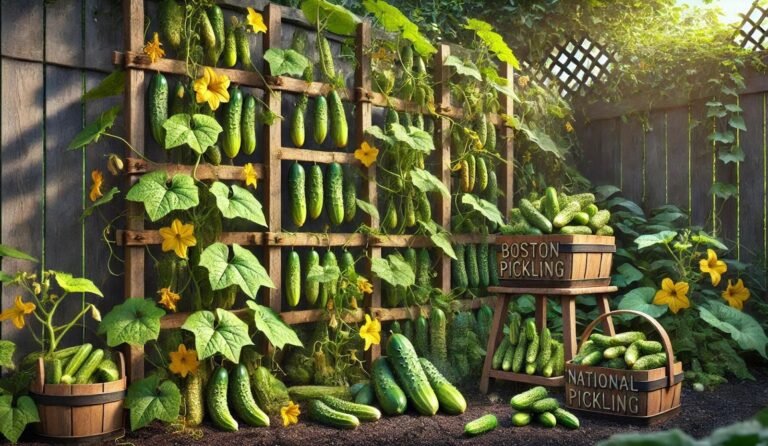Onion Plant Flower Meaning: What It Tells You About Growth
Onion plant flower showing up out of nowhere? It might look kind of cool, maybe even a little magical—but if you’re growing onions for those big, juicy bulbs, that flower is waving a red flag. When an onion starts to bloom, it’s basically shifting from growing mode to reproduction mode, and that can totally throw off your harvest plans. Most gardeners aren’t expecting it, and it usually shows up just when things were looking good.
But don’t pull it out or toss it just yet—there’s still a chance to work with it, and even learn a few tricks along the way. Whether you’re growing indoors on a windowsill or out back in raised beds, knowing why onions flower and what to do about it can save you from a disappointing harvest. Let’s break it down and get your onions back on track.
What Does It Mean When an Onion Plant Flowers?
When an onion sends up a flower stalk, it’s doing something called bolting. Essentially, the plant is entering the reproductive stage of its life. Normally, onions are biennials, which means they grow leaves and bulbs during the first season, and if you left them in the ground for a second year, they’d use that stored energy to produce a flower and set seeds.
But sometimes onions bolt in the first year—especially if the plant gets confused by the weather or stress—and that changes everything. When your onion plant flowers, its energy is being redirected away from growing a large, round bulb. Instead, it’s focusing on reproduction: flowering and, eventually, making seeds. That means smaller bulbs, and the flavor might shift too—sometimes becoming tougher, spongier, or even slightly bitter.
Is It Bad If Your Onion Starts to Flower?
It depends on your goals. If you’re growing onions for their bulbs—whether to store for winter, slice into salads, or caramelize into a sweet and sticky dream—then yes, flowering isn’t ideal. Bolting onions tend to stop swelling, and the bulbs can become woody or hollow in the center. On top of that, bolted onions don’t store well. They’re more prone to rot and spoilage because the neck (where the leaves meet the bulb) stays thick and never seals off properly.
But if you’re not too worried about storage or you’re curious about seed saving, onion flowers can be a beautiful and beneficial thing. They’re attractive to pollinators like bees and butterflies, they add a whimsical look to your garden, and they can lead to free seeds for next season. It all comes down to timing and intent.
Why Are My Onion Plants Flowering?
If your onions are flowering before you’re ready to harvest them, there’s usually a reason behind it. The most common culprit? Temperature swings. Onions are sensitive to a process called vernalization, which is basically how they respond to cold weather. When young onion plants experience a sudden drop in temperature—usually under 50°F (10°C)—for several days, it can trick the plant into thinking winter is over and it’s time to reproduce.
So, if you planted your onions a little too early in the spring, or there was an unexpected cold snap, that could be the cause. Onions that were started from sets (those small baby bulbs) are especially vulnerable to bolting because they’re often more mature than seedlings, and more sensitive to temperature triggers.
Besides weather, stress is another big reason onions flower. If your onions are crowded, underwatered, over-fertilized, or fighting off pests, they might bolt early just as a survival mechanism. Some onion varieties are also naturally more prone to flowering, especially long-day types that aren’t suited for your region. So it’s worth checking the variety you’re planting to make sure it matches your zone and daylight hours.
What Should You Do If Your Onion Plants Flowering?
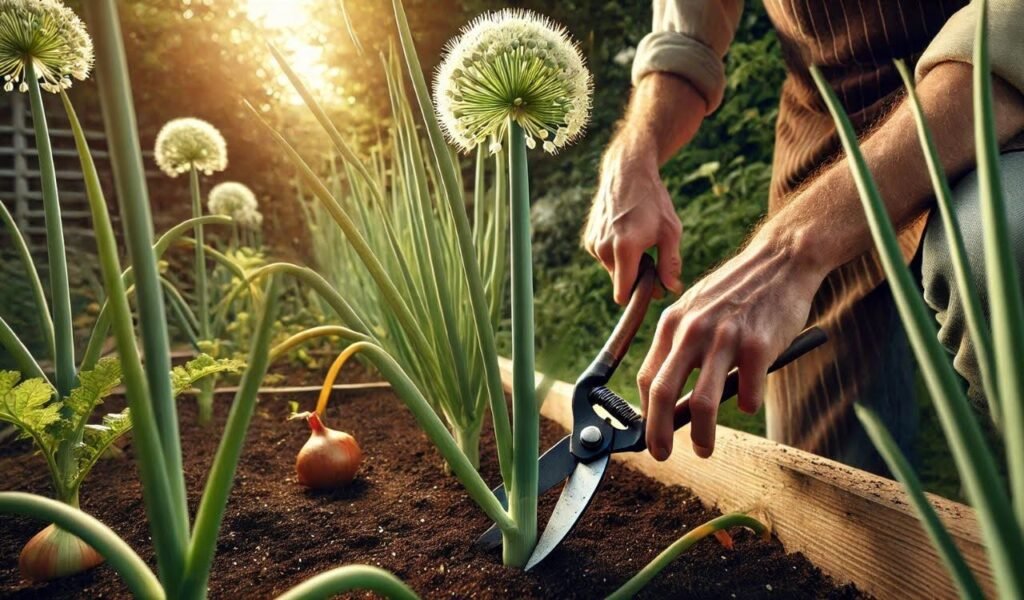
Okay, so your onion is flowering. First of all—don’t panic. You’ve still got a few options.
If your onion just started sending up a flower stalk and it hasn’t fully bloomed yet, you can try cutting the stalk off at the base as soon as you notice it. This won’t reverse the bolting, but it can slow down the process and give the bulb a little more time to grow. That said, the plant’s hormones have already changed, so the onion likely won’t reach full size or proper storage quality.
At this point, your best bet is to harvest the onion sooner rather than later. Don’t wait for the tops to fall over like you would with regular onions. Instead, pull it from the ground, trim the leaves, and either use it fresh or preserve it. Bolted onions are fine to eat—they’re just not great for long-term storage. You might notice a thick center stalk inside the bulb, which you can remove before cooking.
If you’re the curious type, you might let the plant keep growing and flower completely. Onion flowers are globe-shaped clusters of tiny white or purplish blooms. They’re quite pretty and can attract beneficial insects to your garden. Plus, you can let the flowers dry out and collect seeds for next season’s planting—just be sure you’re not planting hybrid varieties, or the seeds may not produce true-to-type onions.
Can You Still Eat a Flowering Onion?
Absolutely. The bulb, stalk, and even the flowers are edible. The bulb may be a bit tougher, especially if the center has gone woody, but it’s still usable in soups, sautés, and stir-fries. The flower stalk itself is edible too—though quite fibrous—so it’s best used like a leek or green onion.
You can chop it up and use it for flavor, especially in stocks or slow-cooked dishes. Onion flowers are delicate and have a light onion flavor. They make a lovely garnish on salads or can be tossed into omelets and sandwiches for a mild punch.
How to Prevent Your Onions From Flowering in the First Place
If bolting onions aren’t your jam, you can take steps to prevent flowering before it starts. Timing and variety choice are two of the biggest keys.
Start by picking the right onion variety for your region. Onions are classified as short-day, intermediate-day, or long-day based on how much daylight they need to form bulbs. If you’re in the northern U.S., go for long-day onions. Southern growers should choose short-day types. Using the wrong type for your zone can confuse the plant and increase the risk of bolting.
Next, plant at the right time. If you’re in a cool climate, don’t be tempted to plant onion sets or seedlings too early in the spring. Wait until the worst of the frost has passed and soil temperatures are consistently above 50°F. If you’re in a warmer area, fall planting is an option for short-day varieties, which will overwinter and bulb up in early spring.
Consistent care is also crucial. Onions like rich, well-draining soil and steady watering. They don’t appreciate dry spells followed by sudden soaks. Avoid high-nitrogen fertilizers once the bulbs start forming, and make sure your onions have room to grow—crowded plants are more prone to stress and bolting.
Mulching can help regulate soil temperature and moisture, which reduces the chance of weather-induced bolting. If you know a cold snap is coming, you can even cover young onions with row covers or garden fabric for protection.
What About Indoor Onions—Why Are They Flowering?
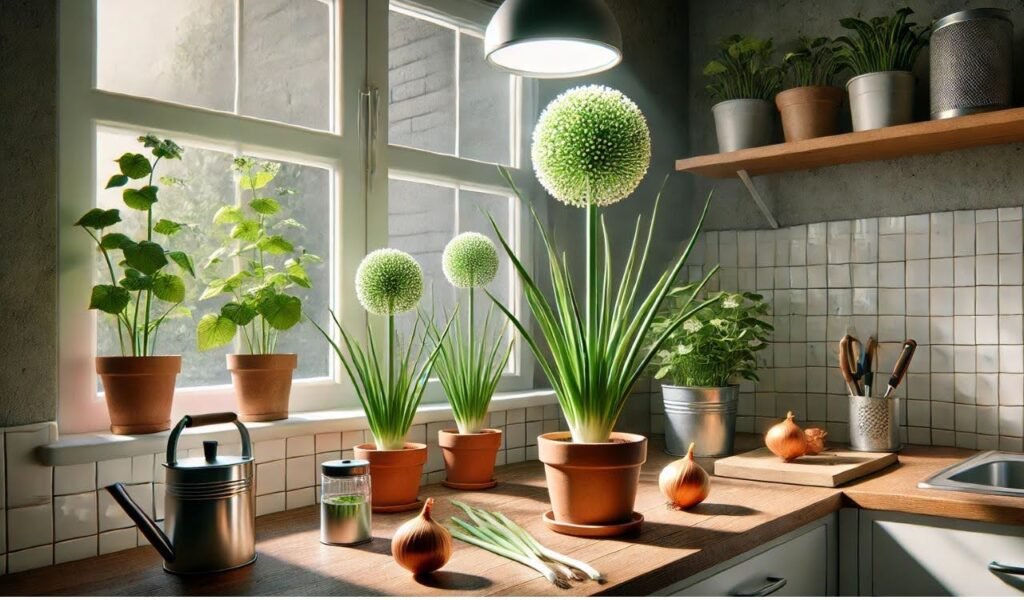
Growing onions indoors is a great option if you’re short on outdoor space, but it comes with its own quirks. Indoor onions are more sensitive to light and temperature inconsistencies, especially if they’re placed near windows that fluctuate between hot sun and cool drafts. Artificial grow lights can help stabilize light levels, but be mindful of the temperature around your plants.
Onions grown in containers also need space—their roots like to stretch out. Overcrowding or shallow pots can stress the plants and encourage bolting. Regular feeding with balanced fertilizer and consistent watering (without letting the soil stay soggy) will keep your indoor onions happy and focused on bulb growth.
Are Flowering Onion Plants Ever a Good Thing?
Yes! While they may not be ideal if you’re after large bulbs, flowering onions do have their perks. For one, they’re beautiful. Those globe-like blooms can add a whimsical touch to your garden and act as a magnet for bees, butterflies, and other pollinators. If you’re practicing companion planting or just love seeing your garden buzz with life, onion flowers are a win. And don’t forget about seed saving.
If you’re growing heirloom or open-pollinated onion varieties, you can allow some to flower and collect seeds for next year. Just be sure you only let one variety flower at a time, or separate different types by at least 800 feet to avoid cross-pollination.
FAQ
Why is my onion plant flowering?
It’s bolting—usually due to stress or sudden cold. The plant thinks it’s time to reproduce.
Is it bad if my onion flowers?
Yes, if you’re growing bulbs. Flowering stops bulb growth and affects storage.
Can I eat a flowering onion?
Definitely! The bulb, stalk, and even flowers are edible—just not ideal for storage.
Should I cut off the onion flower?
You can. It won’t reverse bolting, but it may slow it down a bit.
Will the onion still grow after flowering?
Not really. Once it bolts, most of its energy goes to the flower, not the bulb.
Can I save seeds from onion flowers?
Yes, if it’s an open-pollinated variety—not a hybrid. Let the flower fully dry out.
How can I stop onions from flowering?
Choose bolt-resistant types, plant at the right time, and avoid stress like cold snaps or drought.
Final Thoughts
It can be a bit frustrating when your onion plants flower before they’re supposed to, especially if you were dreaming of perfect, plump bulbs. But like a lot of things in gardening, sometimes the unexpected is part of the journey. Flowering onions may not be ideal for storage, but they’re still usable, beautiful, and even beneficial in the right context.
So next time your onion plant sends up a flower, take a closer look, snap a picture, and decide what works best for you. Whether you choose to snip the stalk and save the bulb or let it bloom and go to seed, you’re learning, adapting, and becoming a better gardener in the process. And hey—if nothing else—you’ll have a great story to tell next season.


